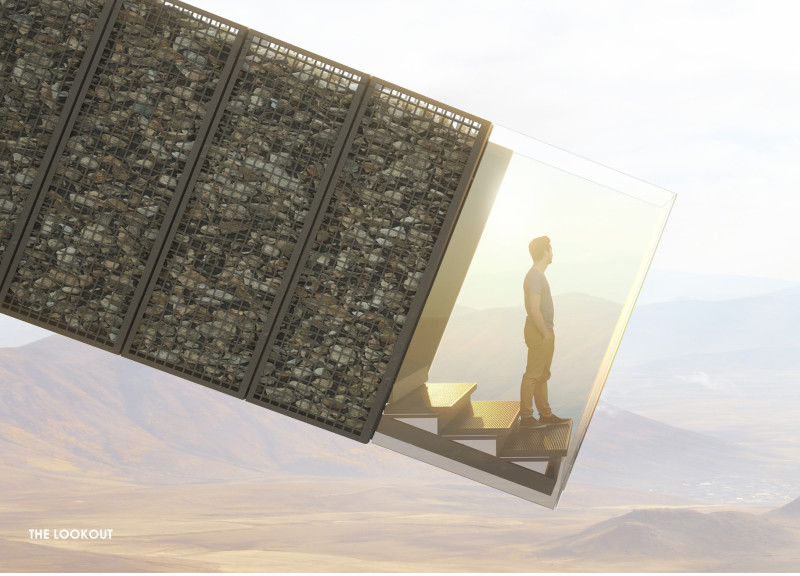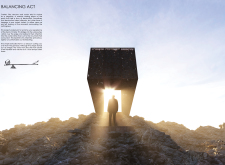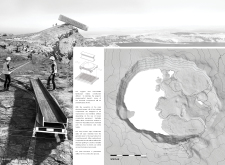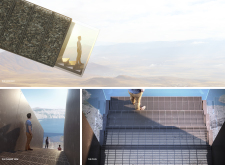5 key facts about this project
### Project Overview
The "Balancing Act" project is situated at Newell Crater, designed to enhance visitor engagement with the area’s natural beauty while addressing the challenges posed by its rugged landscape. The intent is to establish a dialogue between architecture and nature that encourages safe interaction with the environment, ultimately transforming the visitor experience into one of heightened awareness and appreciation for the surrounding landscape.
### Structural Dynamics
The architectural composition features a cantilevered structure that projects over the crater, affording visitors unobstructed views of the surrounding terrain. Central to the design is an expansive observation platform, guiding guests to a vantage point where they can safely confront the void below, fostering a direct interaction with the landscape. This arrangement promotes a physical and psychological connection with the environment, balancing the thrill of exposure with the comfort of secure footing.
### Material Selection and Sustainability
The project employs gabion baskets filled with local rock as a primary structural element, aligning the architecture with its surroundings while minimizing environmental impact through the use of indigenous materials. Structural steel frames provide stability and a contemporary aesthetic that complements the landscape. Extensive use of glass enhances visual connectivity and allows natural light to permeate the interior spaces, facilitating an immersive experience. Additionally, expanded metal grating is utilized for walkways, offering durability and maintaining sightlines to the landscape below. The construction approach employs prefabricated components to minimize disturbance in the sensitive area, incorporating innovative logistical solutions to navigate the challenging terrain.






















































